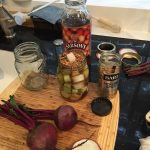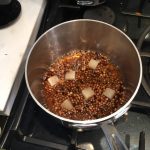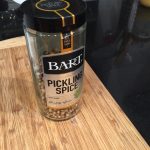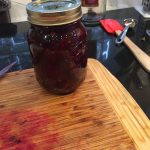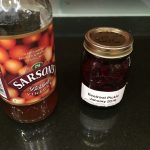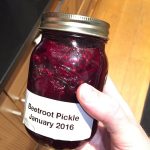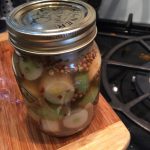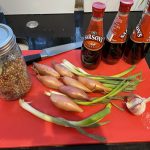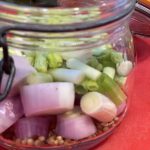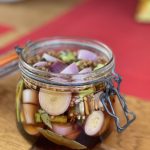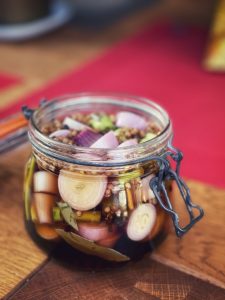 [Update 2023]
[Update 2023]
This continues to be a favourite recipe. I should do this more often and throughout the year. I bought some Kilner Jars for the new 23′ edition.
I decided to do a few pickled onions for winter. Soon I will make some slow-cooked lard to go with it…As I was at my mum’s during Xmas, she did some pickled beetroots and it was very nice with some salads and cheese. She had done some Red beetroot and some Yellow beetroot. I have not researched the yellow beetroot in the UK so I have no idea if it is actually a beetroot or another vegetable. [update] Here for golden beetroot.
In any case, I decided to do my pickled onions like every year but also try the beetroot. I decided to cook mine a little so that it would be a bit softer than the one that my mum did. (she had them raw in vinegar and it was very crunchy).
Ingredients:
- 2 or 3 Raw beetroot
- Pickling Spices (see below)
- Aluminium foil
- 6 sugar cubes
- Malt Vinegar (pickling vinegar)
I decided I would cook mine in the oven in some aluminium foil. I simply put the clean but unpeeled beetroot in the oven at 160 degrees for 30 minutes.
As the beetroot is roasting, I prepared the vinegar. I took some pickling spices (Ginger, Coriander Seeds, Mustard Seeds, Crushed Red Chillies, Bay Leaves, Allspice, Black Peppercorn). I first put the spices in a saucepan and let them roast for a minute or so. The smell is intense, then you pour the vinegar on top with the sugar and let it boil for a few minutes. Let it cool down as you wait for the end of the cooking of the beetroot.
Once the beetroots have roasted. I took them out of their foil and peeled them. Be careful of your clothes as the red of the juice will stain big time!
Cut the beetroot in medium-sized chunks and put into a conserve jar. Remember to sterilise the jars before putting any food into them. Don’t want to be sick! It is easy, simply put a bit of water in them (like a centimetre) and then put into the microwave for a couple of minutes, it will zap anything nasty. Then, pour the vinegar on top and make sure that the vinegar is covering all of the vegetables. Close the jar and wait for a couple of weeks before starting to eat. Put a label on the jar so that you know when you made them. You can keep over winter and use in the summer if you wish.
Enjoy!
[2020 Update] I keep making these every year…here is a couple of pictures of the 2020 version.

